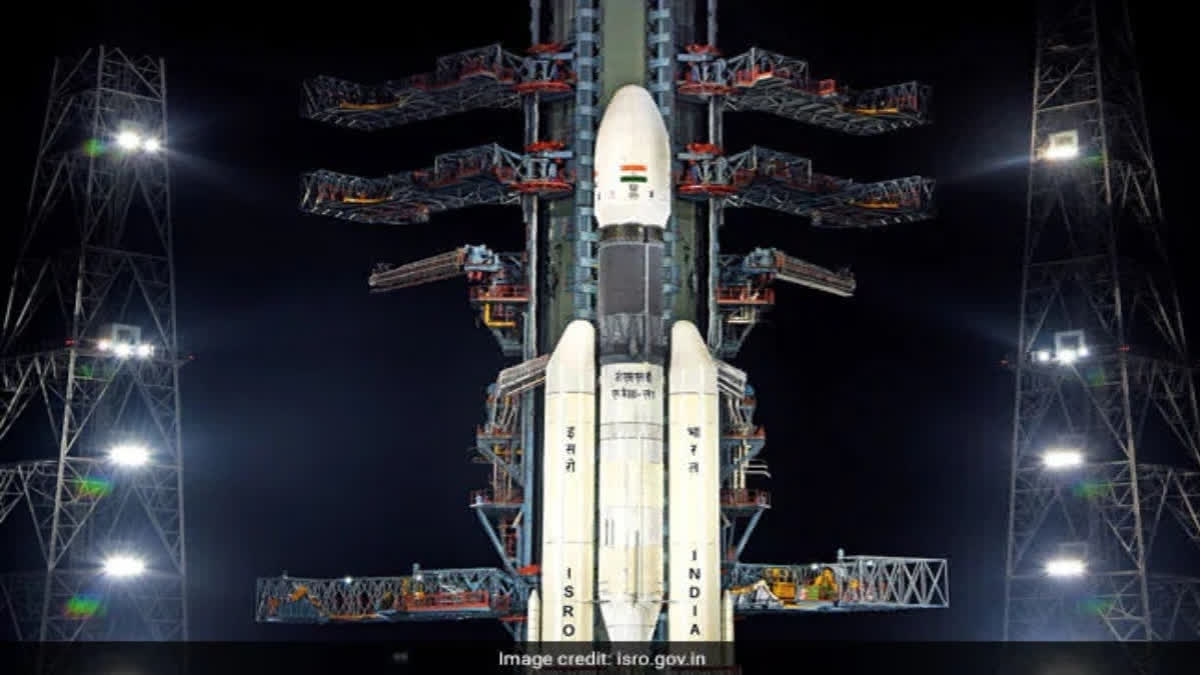ISRO team with miniature model of Chandrayaan-3 offers prayers at Tirupati temple Tirupati (Andhra Pradesh): A day before its much anticipated launch, a team of Indian Space Research Organization (ISRO) scientists offered prayers at the well-known Tirupati Venkatachalapathy temple here with a miniature model of Chandrayaan-3 on Thursday morning.
The team comprising, Shantanu Bhatwadekar, Scientific Secretary of ISRO, visited and offered prayers at the temple. "This is our Chandrayaan mission and everything is planned," an ISRO scientist told reporters after offering prayers. The ISRO had earlier made the official announcement regarding the Chandrayaan-3 mission, revealing important details about the upcoming lunar expedition.
After making a failed attempt in 2019, ISRO has confirmed that the mission is scheduled to launch on July 14 at 2:35 PM. The objective of Chandrayaan-3 is to achieve a safe and successful soft landing on the lunar surface, with the anticipated landing window falling between August 23 and August 24.
ISRO's Chairman, S. Somnath, expressed the significance of this mission, stating that the aim is to accomplish a 'soft landing' on the Moon. This ambitious endeavour marks a crucial milestone for India's rapidly advancing space sector, highlighting the nation's growing capabilities in space exploration.
Also read:Explainer: Why ISRO opted for 'failed design' for Chandrayaan-3?
In preparation for the mission, ISRO has achieved a critical milestone by successfully integrating the Chandrayaan-3 spacecraft with the Launch Vehicle Mark-III (LVM3) at the Sathish Dhawan Space Centre in Sriharikota. This crucial step ensures that both the spacecraft and the launch vehicle are ready for the upcoming mission. The integration process was completed ahead of schedule, setting the stage for the planned launch on July 14 at 2:30 PM.
The primary objective of the Chandrayaan-3 mission is to demonstrate India's capability for a soft landing on the Moon. This will be achieved through the delivery of a lander and a rover to the lunar surface. Following the setback encountered during the landing attempt of the previous Chandrayaan-2 mission, Chandrayaan-3 aims to rectify those shortcomings and accomplish a successful soft landing.
The Chandrayaan-3 spacecraft consists of three key components: the lander module, the propulsion module, and a rover. The lander module is specifically designed to execute a soft landing at a predetermined location on the Moon, where it will deploy the rover. The rover's primary function will be to conduct chemical analyses of the lunar surface and carry out a variety of scientific experiments.
The successful execution of the Chandrayaan-3 mission will not only enhance India's reputation in the field of space exploration but also contribute valuable scientific knowledge about the Moon's surface. It will pave the way for further advancements and future missions, solidifying India's position as a key player in the global space arena. (With agency inputs)
Also read:Chandrayaan-3 concludes its 'Launch Rehearsal'; here's all you need to know about ISRO's 'soft-landing' lunar exploration mission
